
First edition published October 2021
Bradt Guides Ltd
31a High Street, Chesham, Buckinghamshire, HP5 1BW, England
www.bradtguides.com
Print edition published in the USA by The Globe Pequot Press Inc,
PO Box 480, Guilford, Connecticut 06437-0480
Text copyright 2021 Bradt Guides
Photographs Nori Jemil and other photographers
Project Manager: Anna Moores
Design: Pepi Bluck, Perfect Picture
The author and publisher have made every effort to ensure the accuracy of the information in this book at the time of going to press. However, they cannot accept any responsibility for any loss, injury or inconvenience resulting from the use of information contained in this guide. All rights reserved. No part of this publication may be reproduced, stored in a retrieval system, or transmitted in any form or by any means, electronic, mechanical, photocopying, recording or otherwise without the prior consent of the publisher.
ISBN: 9781784778507
British Library Cataloguing in Publication Data
A catalogue record for this book is available from the British Library
Photographs
Front cover Grand Canal, Venice after sunset
Author photo () Michael Wyatt
Part openers : Magellanic penguin, Tierra del Fuego
Typeset by Pepi Bluck, Perfect Picture
Production managed by Zenith Media; printed in the UK
Digital conversion by www.dataworks.co.in
AUTHOR
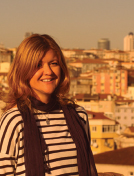
An award-winning travel photographer, Nori Jemil is also a writer, teacher and videographer. Her work has appeared in numerous publications, including National Geographic Traveller, BBC Travel, Conde Nast Traveller and Telegraph Travel. Nori was named Photographer of the Year in 2017 by the British Guild of Travel Writers. Shes won other accolades, including Wanderlust magazines Photograph of the Year in 2011. She teaches film and photography in London and on specialist overseas tours, most recently in Patagonia and Iceland. Her photos have been exhibited in London, Milan, Barcelona and Madrid.
Alongside her regular contributions to National Geographic TravellerUK, Nori helped to judge their 2019 photography competition and has presented photography sessions for the past three years at their annual travel Masterclasses. In addition, she takes on regular public speaking engagements at travel events and as part of National Geographic Travellers Travel Geeks programme.
CONTENTS
SHARE YOUR PHOTOS WITH US
Have you been inspired to take Noris book on the road with you? Why not write and tell us about your experiences using this guide? You can send your feedback to us on t 01753 893444 or e or Amazon. Please also share your photos with us on Twitter, Instagram and Facebook, and remember to tag us!
 Bradt Guides & NoriJemilTravel
Bradt Guides & NoriJemilTravel
 @BradtGuides & @AndeanImaging
@BradtGuides & @AndeanImaging
 @bradtguides & @nori.jemil.travel
@bradtguides & @nori.jemil.travel
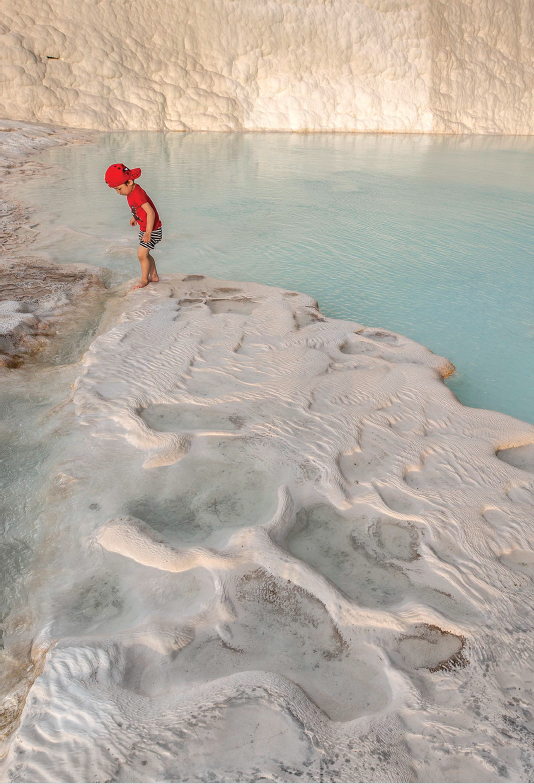
Playing in thermal pools, Pamukkale, Turkey
DSLR, 16mm, 1/160 sec, f7.1, ISO 100
WAITING
ON A HILLSIDE
Im hunkered down on a hillside in southern Turkey. My tripod stands on a limestone ledge, while my own feet are immersed in thermal water that flows gently from a small opening in the rock and down to the valley below. Im waiting, looking out over the shimmering terraces of Pamukkales turquoise pools, taking in the splendour of the landscape and the small town beneath.
Photographers tend to do a lot of waiting, but being in the big outdoors is one of lifes great pleasures. Its no hardship for me, though it can be a little tough on a travelling companion, checking their watch every now and then, stomach rumbling with the distant hope of a cold beer or a hot meal. Thats why this time Im here alone.
Theres hardly a soul around, but intermittently someone appears; a couple taking selfies, and a person who wades in too far and is whistled at by a hitherto unseen security guard. Then a crew of three photographers usher forward a just-married couple. If I wasnt certain before about my location, I am now local photographers always know the best spots.
Merhaba, we greet one another, and in sideways glances check out our respective photographic kit, trying to fathom how professional we are just from branding and camera models. It doesnt take long to size up a fellow photographer and it can be a fun game to play, though unnerving perhaps for someone starting out.
Its a truism that the best camera is the one you have with you, so perhaps the pressure to be heavily kitted out shouldnt be felt so keenly by beginners, especially in this era of fast-developing smartphone and camera technology. I was once told if my tripod was so heavy I might strain a wrist setting it up, Id most likely leave it back in the hotel anyway. Travelling light is something we should aim for.
I have to admit that I trudged along this ridge a few days ago in the heat of the sun, lugging my own heavy gear and doing a recce for the perfect location. In my defence, I am here to photograph a story of culture and life in Turkey for a travel magazine, so though Ive been as efficient as possible, there is still some considerable metal bulk about my person. Im trying to scale it down, I really am, but the dichotomy is that photographers need to be well prepared.
On the outskirts of the site, with people and civilisation thinning out, I come across the finest spot of all. It occurs to me now as it has over the past few years that photography is often about being in the moment. Yes, we need to plan ahead, but theres a balance between preparedness and our ability to react. Theres something magical that often gets us in the right place at the right time. And the idea that knowing everything about the technical side of things aperture, shutter speed, exposure metering and depth of field will result in a perfect image is both over-simplifying and overcomplicating matters. Yes, of course, one needs to understand the technology, but we also need a sensory awareness and a sensitivity to people and place. Learning to look, knowing when to move and when to stop, and how to feel our way into a photograph, are all areas that are often swerved in favour of tangible, technical advice.
In fact, many travel photography books seem intent on top-loading the technicalities, with a mountain of information that needs ingesting, seemingly all at once. But the vast majority of what Ive learned in my formative years of taking photographs has been experiential, from travelling with other photographers and working things out practically because I wanted, or needed, to know how to do something. Theres nothing like knowing you have a once-in-a-lifetime opportunity to photograph the ephemeral northern lights that will teach you to understand your cameras controls, and fast. And this is borne out too by my parallel life as an educator. Running workshops, teaching students and training teachers for more than 20 years has shown me that people learn most by doing, not by being told or given a manual to memorise (though they do come in handy, so please dont throw yours out!).
Next page
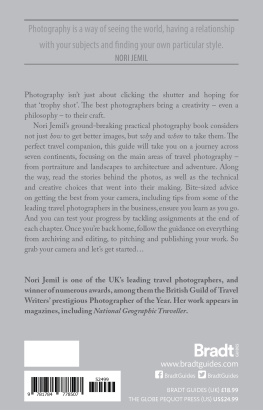

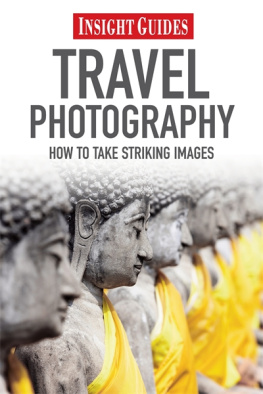
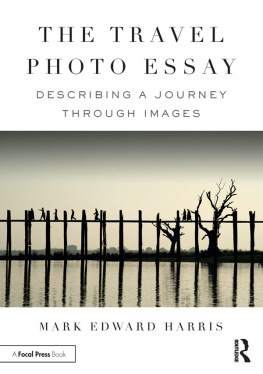

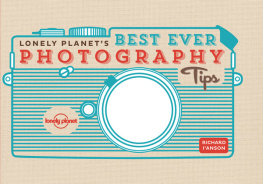
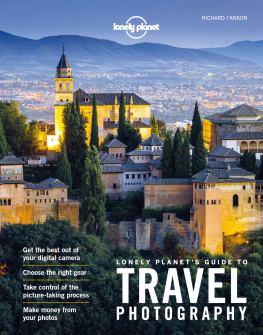
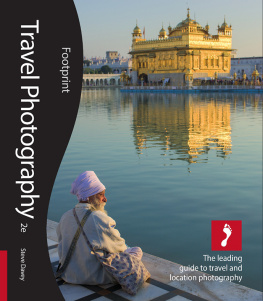
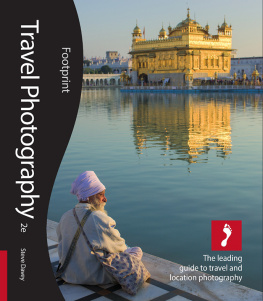
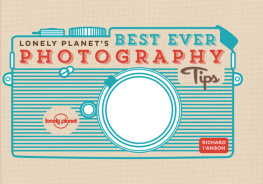
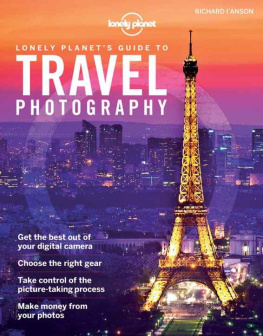


 Bradt Guides & NoriJemilTravel
Bradt Guides & NoriJemilTravel @BradtGuides & @AndeanImaging
@BradtGuides & @AndeanImaging @bradtguides & @nori.jemil.travel
@bradtguides & @nori.jemil.travel